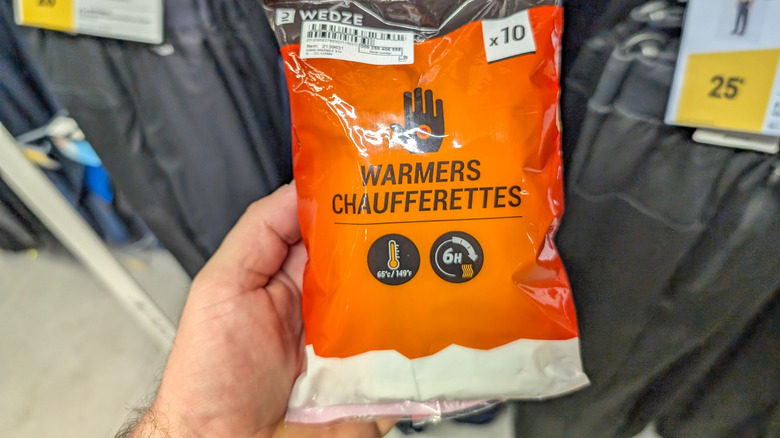Hiking In The Cold? Here's How To Make Your Hand Warmers Last Longer After Being Opened
We may receive a commission on purchases made from links.
Hand warmers while hiking almost feel like cheating, don't they? We already have fleeces, shells, wool socks, and knit caps, which are each designed to keep your body warm in the winter. Then there's this soft pouch, about the size and shape of a tea bag, that magically heats up inside our gloves. Used properly, the hand warmer feels like a tiny stove, heating up to over 100 degrees Fahrenheit. This can radically improve your outdoor activities in winter, keeping your digits toasty even when the mercury drops below zero. Cheating never felt so good.
The only downside to disposable hand warmers is that they wear off eventually. The highest quality brands last up to 12 hours, while most of them last between five and 10 hours. Beyond that, the little bag is useless for warmth and can be tossed. But what if you only have a single pair of hand warmers and you'll be out in the cold for two different periods of time? How can you keep those hand warmers fresh?
Here's a trick that works for many users: stick your hand warmer inside a plastic bag. This bag should be sealable, preferably ziplock, and you should squeeze any excess air out of the bag before sealing it. Many people have found that this tactic "pauses" the warmer's emanation of heat, so you can use it again later. This is just one of the many ways to pack for cold weather.
Hand warmers: a mixed bag
Why does this technique work? Because hand warmers are "air-activated," so the warmer needs to take in oxygen in order to start its chemical process. When you place one of these warmers in an airtight bag, you stop that reaction from happening. After some time passes, you can open the ziplock bag, shake your warmer, and it should restart where it left off. So, if you've used a 10-hour warmer for six hours, you should have about four hours remaining. If you're flying and tend to get cold in an airplane cabin — as many of us do — you can even bring these TSA-approved camping items in your carry-on to make flights feel cozier.
This kind of chemical hand-warming technology dates back over a century, thanks to Japanese inventor Niichi Matoba. There's an important caveat to using them, however: Disposable warmers are definitely convenient, especially for hikers, skiers, winter campers, and outdoor laborers in cold climates, but they also contribute to landfill waste, and the chemicals used in them can contaminate soil. Rechargeable electric hand warmers, such as these items from BEYYON, are both slightly better for the environment and more economical in the longterm. This is one small way to promote sustainable tourism.

